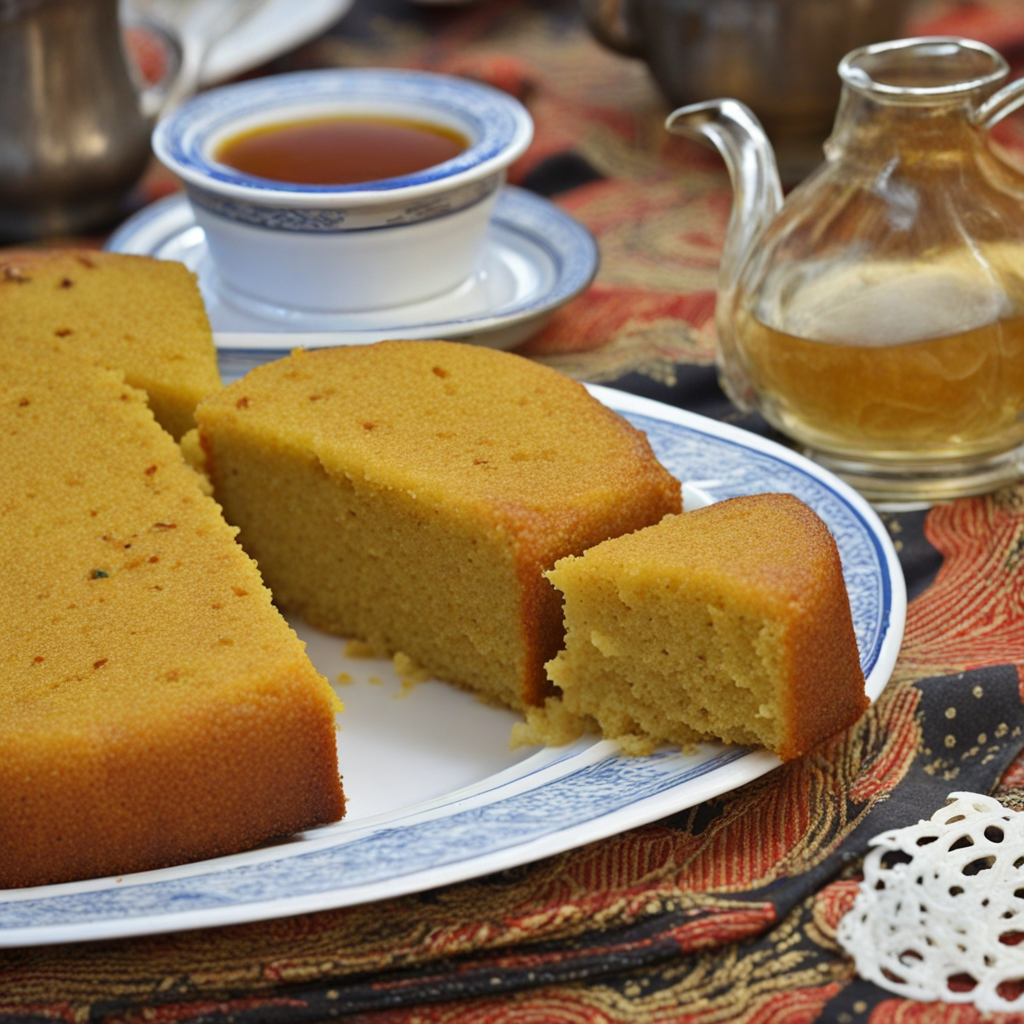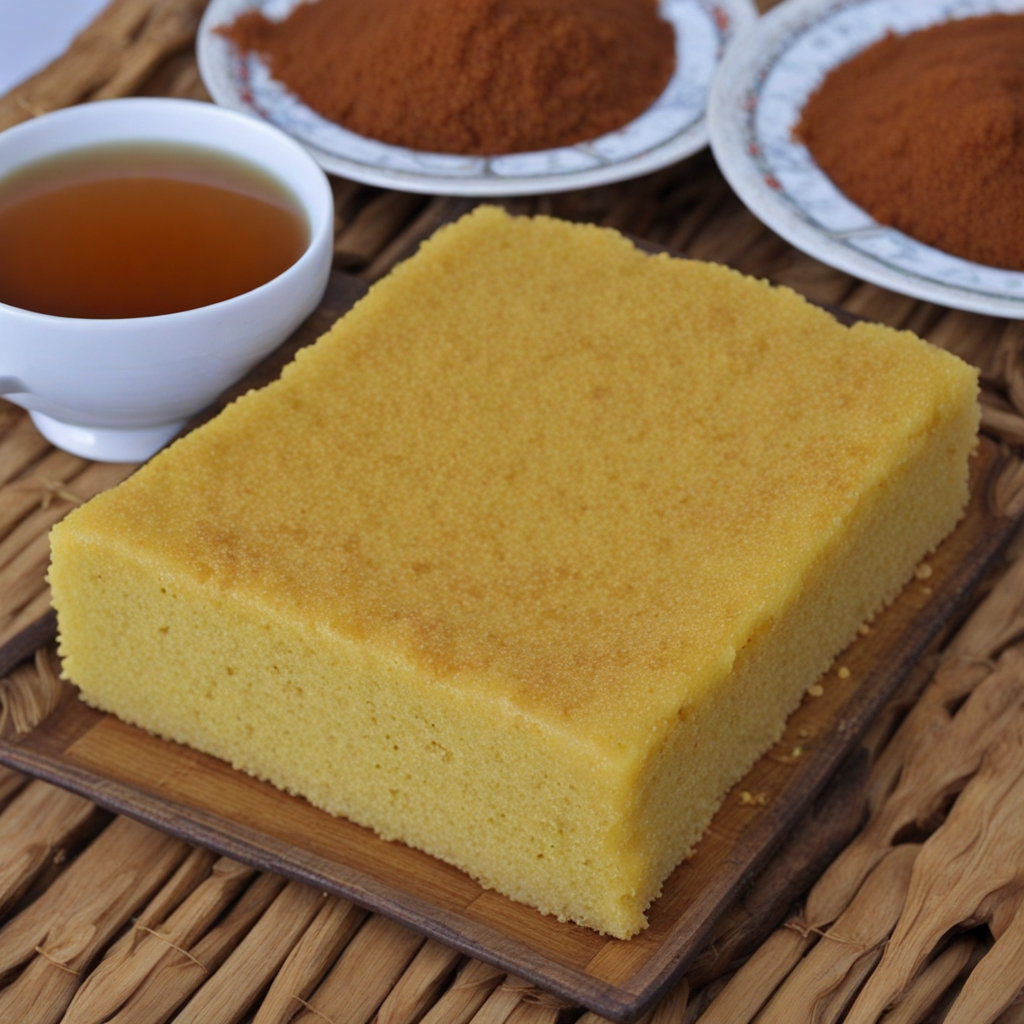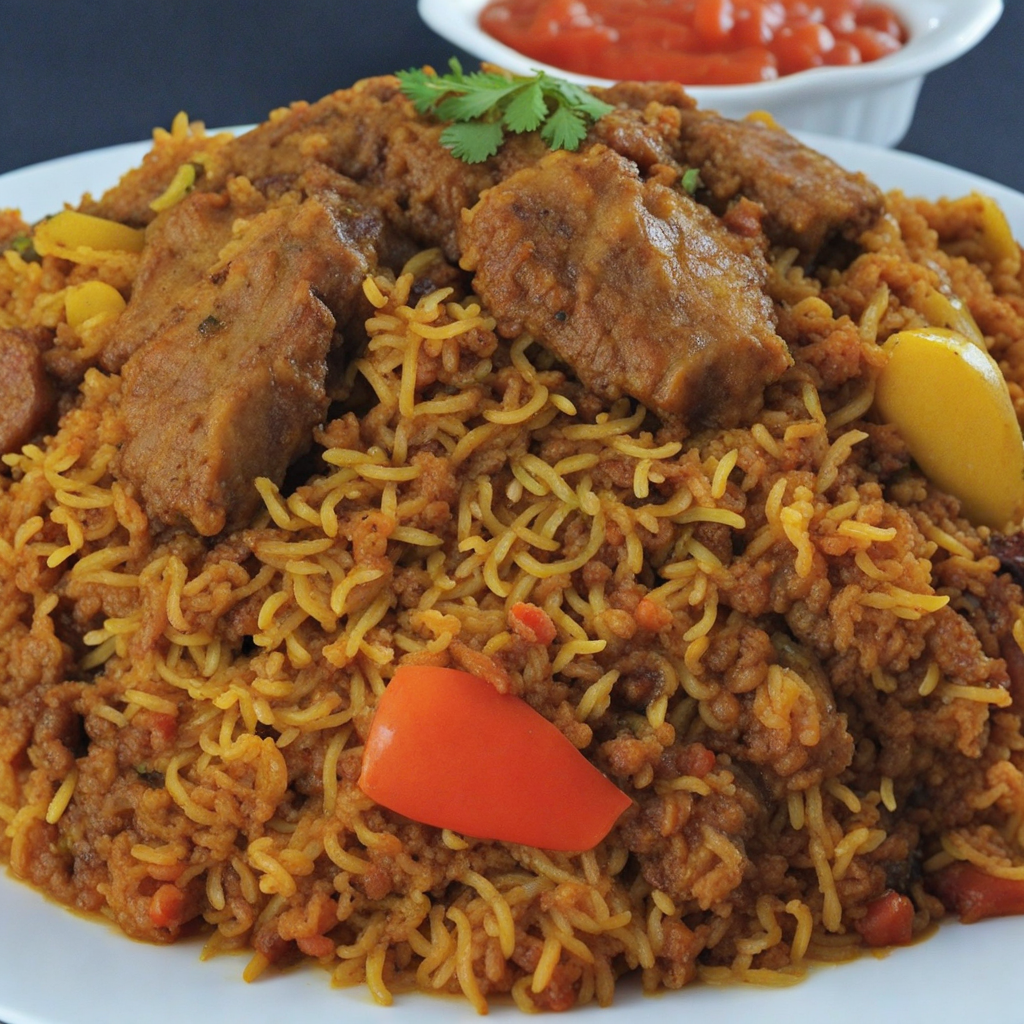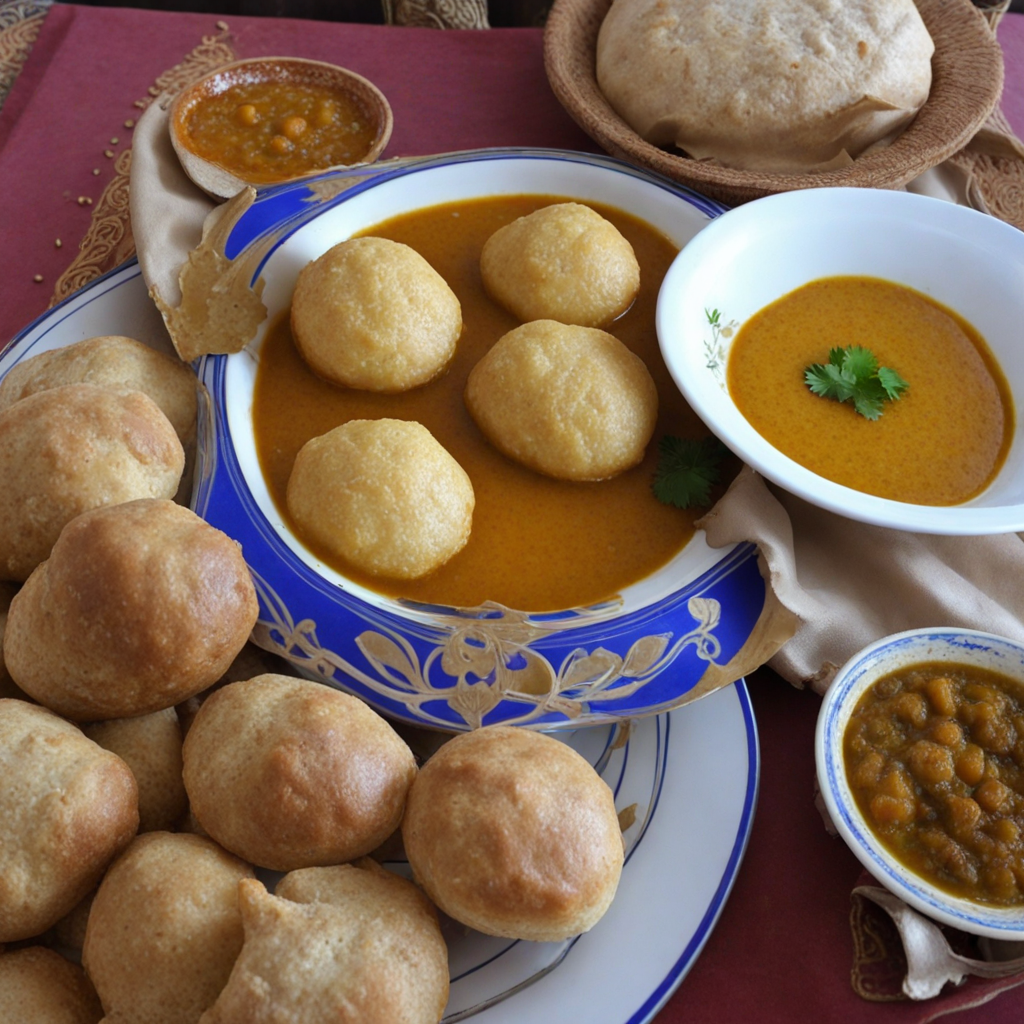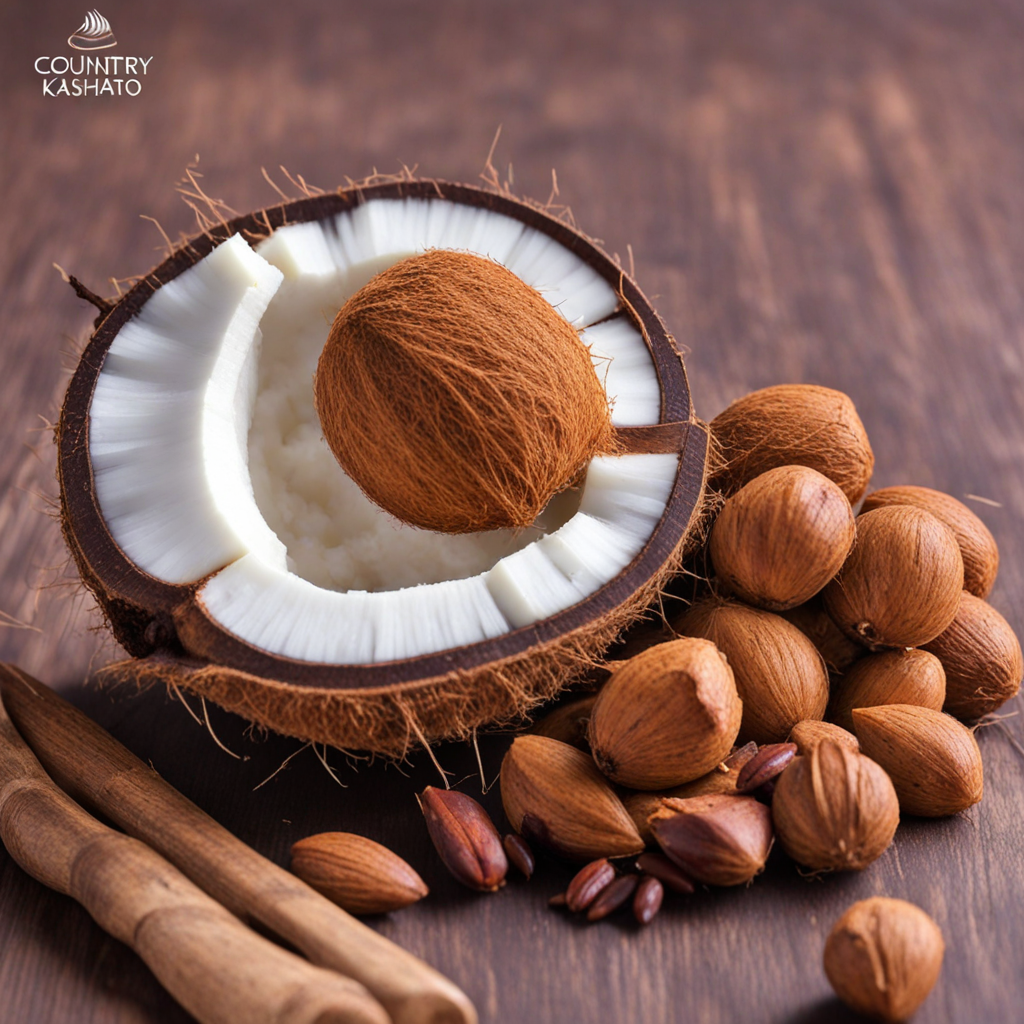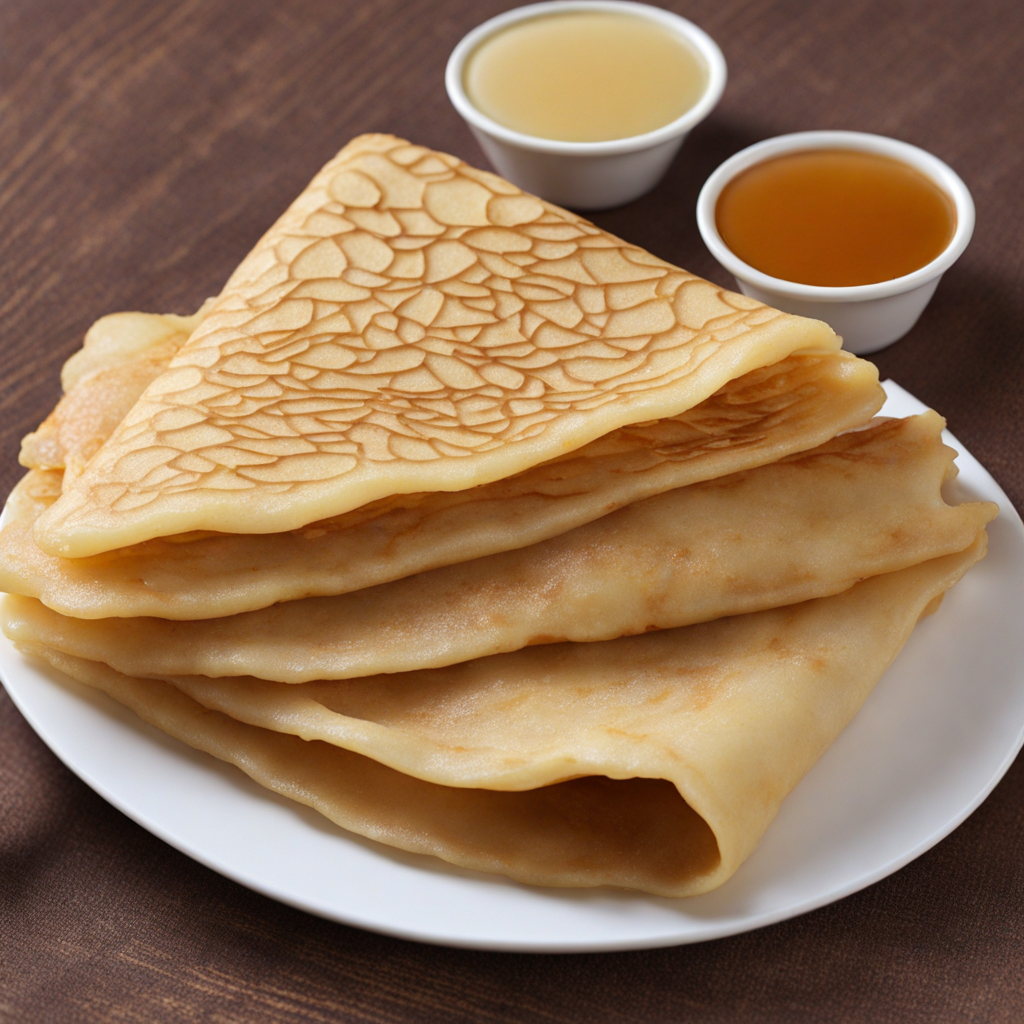Garow
Garow is a traditional Somali dish that showcases the rich culinary heritage of Somalia. This flavorful dish primarily consists of a blend of spices, meats, and sometimes vegetables, all cooked together to create a harmonious symphony of taste. The base of Garow typically features tender cuts of meat, such as goat or beef, marinated and slow-cooked to perfection. The seasoning is where the magic happens, with a vibrant mix of spices like cumin, coriander, and cinnamon, which infuse the dish with warmth and depth, while maintaining a subtle balance that keeps it approachable for newcomers. The texture of Garow is equally enticing, as the slow-cooking process results in meat that is melt-in-your-mouth tender, often accompanied by fluffy rice or flatbread that soaks up the rich, aromatic sauce. Vegetables like carrots and potatoes may also be included, adding a slight sweetness and heartiness that rounds out the dish. Each bite is a delightful experience, as the spices dance on the palate, leaving behind a lingering warmth that invites you to return for more. Pairing Garow with a side of tangy Somali salad or spicy dipping sauce enhances the overall experience, making every meal a feast for the senses. Serving Garow is an occasion in itself, often enjoyed during family gatherings or special celebrations. The communal aspect of sharing this dish reflects the Somali culture's emphasis on hospitality and togetherness. As you savor Garow, you're not just tasting a meal; you're partaking in a rich tradition that emphasizes flavor, warmth, and connection. Whether you're a seasoned food enthusiast or exploring new culinary landscapes, Garow offers a unique taste of Somalia that is sure to leave a lasting impression.
How It Became This Dish
The History of غرو (Guro) in Somalia #### Introduction غرو (Guro) is a traditional Somali dish that exemplifies the rich tapestry of Somali cuisine, reflecting its cultural heritage, agricultural practices, and the historical influences that have shaped the region. With roots deeply embedded in the Somali way of life, Guro is not just food; it is a symbol of community, resilience, and the intricate interplay between the environment and culinary traditions. #### Origins The origins of Guro can be traced back to the nomadic Somali tribes, who relied on pastoralism as their primary means of sustenance. The dish is primarily made from wheat or barley flour, often mixed with various ingredients such as water, milk, and spices, and then shaped into flatbreads or porridge-like forms. The use of grains in Guro highlights the agricultural practices that developed in Somalia, particularly in the northern regions where cultivation of grains has been prevalent. The name 'Guro' itself is derived from the Somali word for 'to knead,' which is an essential step in the preparation of the dish. Traditionally, Guro is prepared by hand, emphasizing the communal aspect of cooking in Somali culture. This practice not only fosters a sense of community but also strengthens familial bonds, as multiple generations often come together to share in the preparation and enjoyment of the meal. #### Cultural Significance Guro holds a special place in Somali culture, often served during significant occasions such as weddings, religious celebrations, and festivals. It is a dish that embodies hospitality, as families prepare large quantities to share with guests, symbolizing generosity and warmth. The communal aspect of Guro is evident in its preparation and consumption; it is typically eaten with hands, encouraging a sense of togetherness among diners. In addition to its role in social gatherings, Guro is also significant in religious contexts. During Ramadan, for instance, families prepare Guro as a nutritious meal to break their fast. The dish is considered wholesome and sustaining, providing the energy needed for the day ahead. Its versatility allows it to be served with various accompaniments, such as honey, yogurt, or savory stews, making it suitable for different occasions and preferences. #### Development Over Time The development of Guro has been influenced by various historical and social factors. The arrival of foreign traders and colonizers in the 19th and early 20th centuries introduced new ingredients and cooking techniques to the Somali culinary landscape. For instance, the incorporation of spices such as cumin, coriander, and cardamom has enriched the flavor profile of Guro, showcasing a blend of indigenous and external influences. Moreover, the Italian colonization of Somalia from the late 19th century to the mid-20th century introduced pasta and other wheat-based dishes, which left a lasting impact on local cuisine. While Guro remained rooted in traditional practices, the exposure to Italian culinary methods led to innovations in preparation and presentation, making it more appealing to a broader audience. In contemporary times, Guro has evolved to accommodate the changing dynamics of Somali society. With urbanization and migration, traditional dishes like Guro are being reinterpreted and adapted in diaspora communities around the world. Somali immigrants in countries such as the United States, Canada, and the United Kingdom have brought Guro with them, introducing it to new audiences while also experimenting with its ingredients and preparation methods. #### Ingredients and Preparation The traditional preparation of Guro begins with high-quality wheat or barley flour, which is mixed with water to create a soft dough. The dough is then kneaded by hand, a process that not only develops the gluten but also allows for the incorporation of various spices and flavors. Depending on regional variations, some cooks may add milk or yogurt to enrich the dough, adding a creamy texture and enhancing the nutritional value of the dish. Once the dough is ready, it is shaped into flatbreads or formed into small balls and cooked on a hot griddle or pan. The cooking method can vary, with some opting for a more traditional approach of cooking over an open flame, while others may use modern appliances. The result is a warm, slightly chewy bread that can be enjoyed on its own or served alongside stews or sauces. Guro's versatility is one of its most appealing aspects. It can be served as a breakfast dish, often paired with honey or sweetened yogurt, or as a savory accompaniment to meat and vegetable dishes for lunch or dinner. In some regions, Guro is also used to make a porridge-like dish called “Guroo,” where the bread is crumbled into a bowl and mixed with various toppings, offering a hearty meal. #### Modern Interpretations As Somali cuisine continues to gain recognition on the global stage, Guro has found its way onto the menus of Somali restaurants and food festivals worldwide. Chefs are experimenting with Guro, incorporating contemporary culinary techniques while maintaining its traditional essence. The dish is often featured in cultural events that celebrate Somali heritage, allowing younger generations to connect with their roots and preserve their culinary traditions. In the context of globalization, Guro has also become a canvas for fusion cuisine, where chefs blend Somali flavors with those from other cultures. This innovation has led to unique interpretations of the dish, combining elements from Middle Eastern, Italian, and East African cuisines, thus expanding its appeal and introducing it to new audiences. #### Conclusion غرو (Guro) is more than just a dish; it is a narrative woven into the fabric of Somali culture and identity. Its origins reflect the agricultural practices of the Somali people, while its cultural significance highlights the importance of community and hospitality. Over time, Guro has adapted to changing social dynamics and external influences, evolving into a versatile dish that resonates with both traditional and modern culinary practices. As Somalia continues to navigate its place in a rapidly changing world, Guro remains a steadfast symbol of resilience, continuity, and the enduring power of food to bring people together. Whether enjoyed at a family gathering or a cultural celebration, Guro serves as a delicious reminder of the rich history and vibrant culture of Somalia.
You may like
Discover local flavors from Somalia


